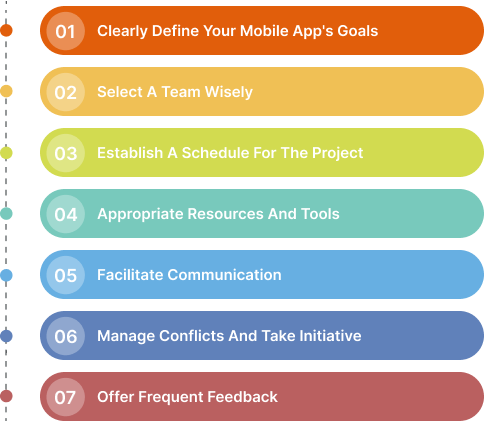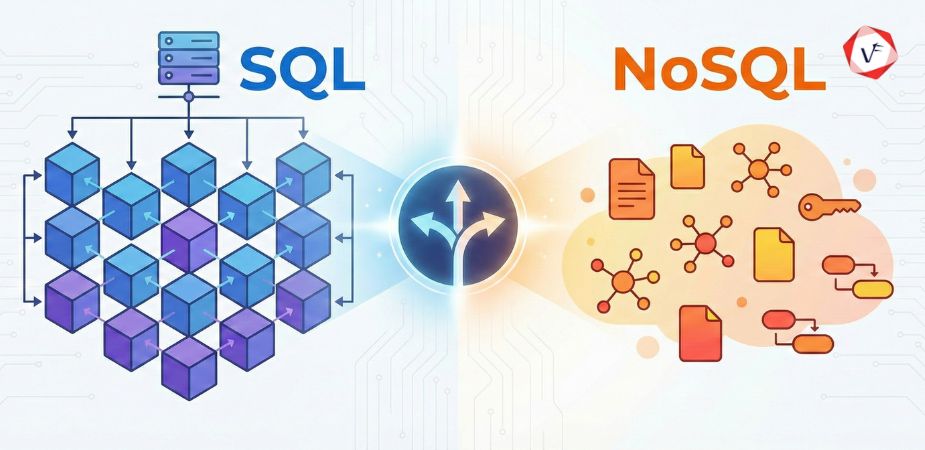- July 03, 2023 6:01 am
- by Sooraj
- July 03, 2023 6:01 am
- by Sooraj

Mobile apps are currently ruling the corporate sector in such a way that the income generated is increasing exponentially every day. Business owners can interact with clients, boost customer engagement, and increase ROI. In order to keep up with the latest mobile services, app development companies can provide mobile application development services for Android, iOS, iPad, and Windows, helping you to take the front.
Businesses must offer effortless online experiences as the world becomes progressively more digitized. People typically have very little tolerance when applications don't operate effectively and quickly.
When an app takes too long to load, 70% of users give up. These kinds of metrics are typical and give an extremely distinct picture: you should prioritize mobile app performance in your plan of action. Without a defined plan of action to guarantee your mobile app's performance is up to the standard, you run a chance of missing users and, consequently, revenue.
In this blog, we are discussing the topic “How to Create a High-Performance Mobile App in a Short Period of Time.
The process for developing applications that include customer demands while anticipating risks that are associated is known as the application development life cycle. It covers every stage of the making of an application, from collecting specifications to implementation, testing, and upkeep. How well your application serves its users is greatly influenced by the application development life cycle. Creating team trust and contributing to an effective project result is adhering to a clear framework for developing, testing, and releasing an application. A product manager is not the only one responsible for enforcing the ADLC; it is crucial that every member of the application team is aware of it and adheres to it strictly.
Every mobile project gets off to a unique start. Many clients merely have a concept when they contact. From the beginning, the main objective is to understand as much as possible about the app's idea. Beginning with the app development process with an array of client interviews and conferences to determine the precise project goals, setting, and timetable. To make sure an app meets both user and company demands, this stage is crucial. The goals of the app will also be decided during the ideation phase. And this can influence choices when deciding what services the app will provide.
It's time to give your ideas an appearance with wireframes once your idea list is complete. A wireframe is considered the design plan for your application. It will show off your app's capabilities and look. Additionally, it will aid in gaining an understanding of how the application functions and looks.
App wireframes primarily provide the team with an established concept for implementation. Additionally, it serves as a manual or reference for developers. A technique to generate the initial design layouts for your app is prototyping during the stages of developing mobile applications. It should point towards a shared understanding with the consumer of how the app will function and how many variations there will be.
Effective design is of the utmost importance when creating mobile applications. As a mobile app developer, you must focus on elements like touch motions, colors, adherence to OS design standards, app layouts, and user interface (UI) designs. A mobile app will always be more well-liked by consumers if it is creative, simple to use, and loads quickly.
You're in an ideal position to build the connecting code in development once you've finished designing your front end and getting your back end wireframed. The technology stack we specify at the project's inception is used for development. Alongside UI/UX designers and quality control technologists, software engineers collaborate. Depending on the methods and models for collaboration the organization provides, the workforce will provide feedback daily or weekly and hold frequent conversations with a client along with a project manager.
Application testing is an essential method that, if used early in the app development process, can help you save money. A mobile application needs to be tested for accessibility, integration, privacy, UI checks, and overall efficiency by the QA team. When you're ready to begin testing your app, keep in mind to divide the procedure into separate steps. You are more probable to receive the in-depth input required to create an excellent application if a testing group has a greater focus on a single function. Consider separating the app into each of its individual aspects, such as privacy, UI design, app reliability, performance, and others.
The application can be deployed for its final version into the operating system where users can locate and use it once software testing is complete, the code is clear, and there are no defects left. In order to filter out potential problems, the software development team examines the deployment procedure.
Applications that are tailored and optimized for a specific platform, such as iOS, Android, or Windows, are known as native app development. Native apps function with the native frameworks, tools, and programming languages of each platform.
The term "cross-platform app" describes hybrid applications that can function on multiple platforms. These applications work with iOS and Android as well as other platforms. With cross-platform mobile app development, developers may create apps that work across multiple operating systems using a single code base. It indicates that the business is capable of releasing the product promptly and with higher quality. The application can access a wider audience because it works with different mobile operating systems.

You can express your objectives to the team and make sure everybody is on the identical page by having an organized plan. Make sure to outline the duties and responsibilities of all team members so that everyone is aware of what is required for them.
Look for people who can complete the task with the necessary aptitude, expertise, and attitude. Employ people who can cooperate on the project and work well with one another.
The employees shall remain organized and on task with the aid of a timeline. Establish goals for each team member, and make sure to monitor their progress.
Make sure your team has the resources and tools they need to perform their duties. This entails providing them with instruction and assistance, as well as having access to the most recent hardware and software.
Make sure that your staff can interact with one another clearly and quickly. Frequent meetings, online chat services, or virtual conferences can all be used to accomplish this.
Establish a strategy for resolving disputes and making choices. Establish a procedure for settling problems and coming to a settlement.
Regularly provide your employees with feedback. When suitable give them encouraging words, and when helpful feedback is needed, give it.
A project manager, or PM, is in charge of overseeing the whole mobile app project and making sure it is finished on schedule, within the specified budget, and with the desired level of quality.
A UI/UX designer is critical for the process of developing mobile apps. Your final product will be simple to use accessible, and appealing due to this expert. To support the best user experience and increased participation, they will ensure every aspect of the application is optimized.
Those who turn all of the UI/UX designs into a functioning program are developers. They should therefore have previous expertise using tools that function across platforms or that support the operating system and languages of your choice.
Last but not least, a crucial element of the mobile app team is a Quality Assurance Engineer. As the name implies, this specialist is in charge of the quality of the answer that you provide.
After the initial launch, app development will continue as you gather user input and add new capabilities. The most crucial step is to assemble a knowledgeable team that will guide you through every stage of mobile app development and guarantee the quality of the finished project.
We trust that this blog has given you a better understanding of all phases of app development, from planning and determining the target market to publishing the app and providing continuing assistance.
Guaranteed Response within One Business Day!

What is Digital Twin Technology?

What are WebAssembly (WASM) Applications?
Code Review Best Practices: Complete Guide for 2026

Database Selection Guide: SQL vs NoSQL
AI Agents in Enterprise Software: How Autonomous AI is Transforming Business Operations